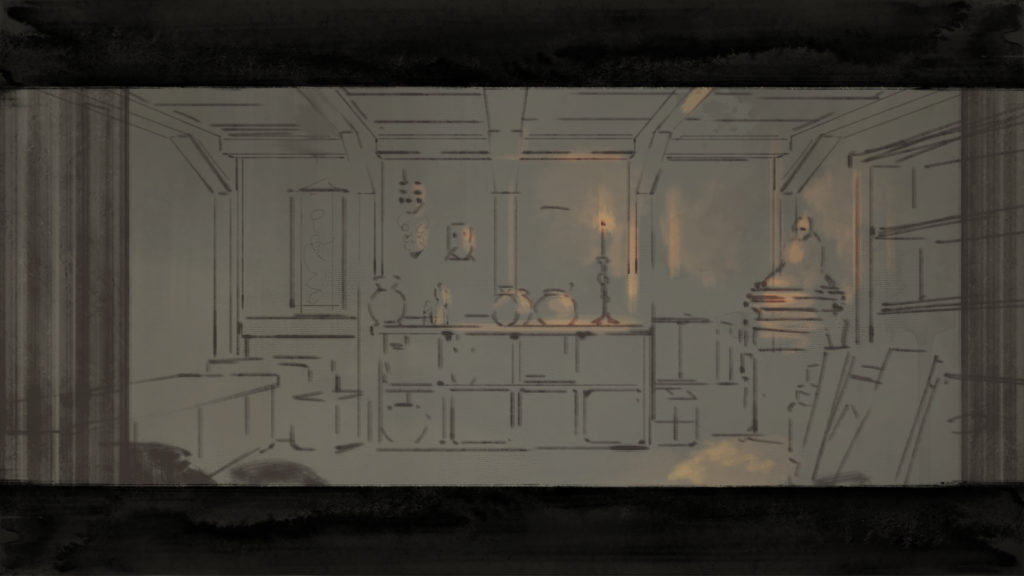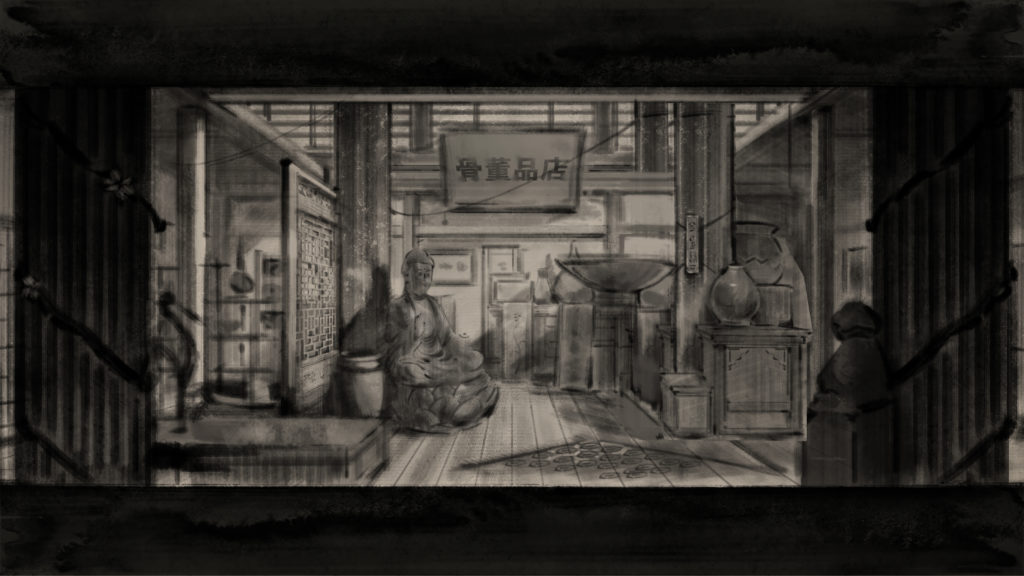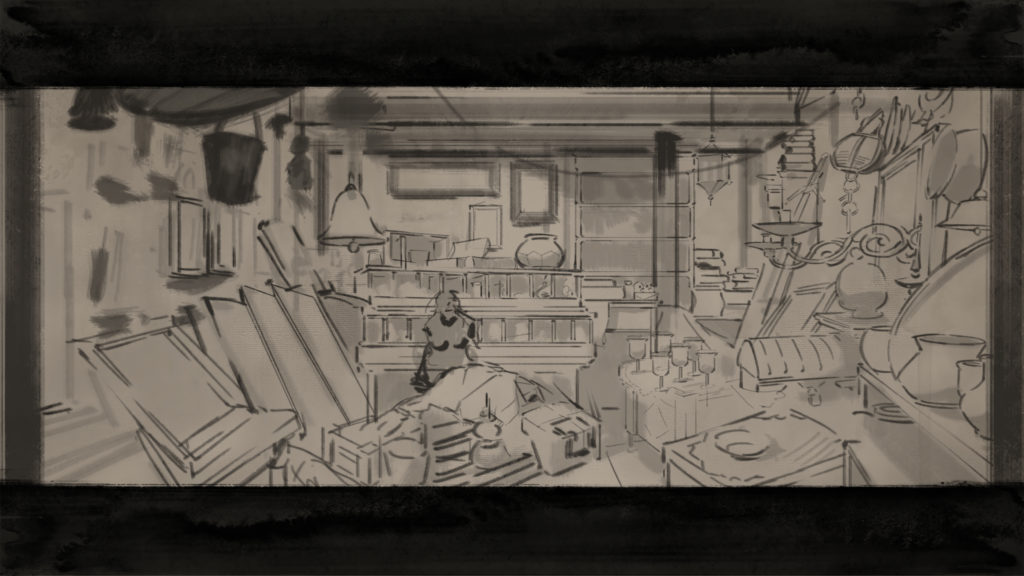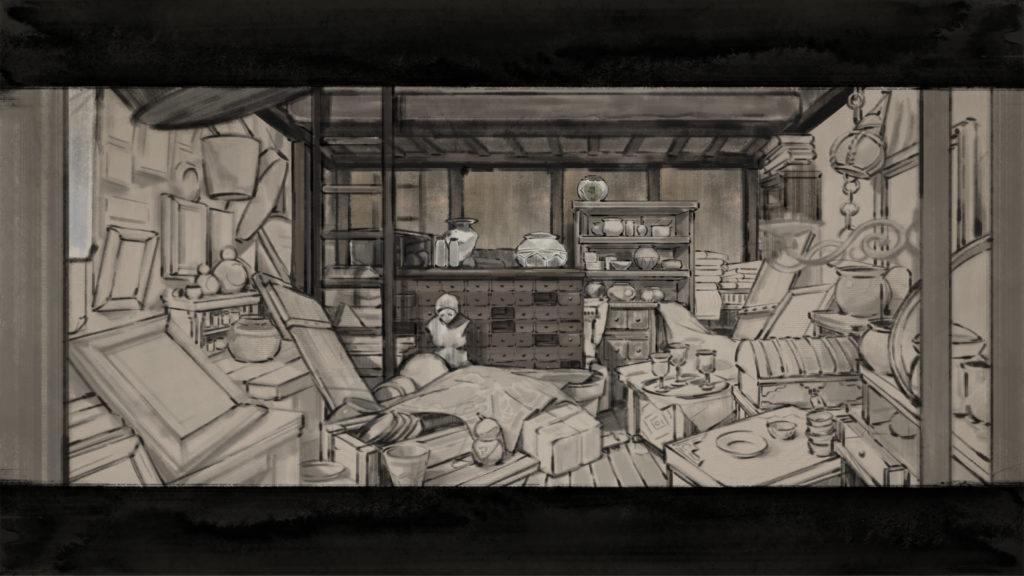Tale of Ronin is a narrative-driven RPG, but the visuals also play a key role in establishing the world and atmosphere of the game. This is especially true for the real-life locations players can visit. Edo period Japan is well-documented, so keeping the environments and villages realistic is important to our team.
One location available to players is the port town of Hamasaki. In the game, Hamasaki is known for its Floating Market, a black market where otherwise illegal goods are traded freely. It is one of the only places foreigners are allowed on Japanese soil.

One of the many shops in Hamasaki’s Floating Market is an antique shop run by a smuggler. On the surface, the shop appears to be a simple luxury establishment. However, it contains a hidden underground storefront stocked with exotic items smuggled from all over the world.
In this post, we’ll go over how Tale of Ronin’s artists bring the smuggler’s shop to life.
We begin with the one point perspective method, which creates the illusion of space and depth. Using a single vanishing point, we block out the whole scene with simple shapes.

Next comes the composition study. During this stage, the artist draws rough shapes and works out the composition of the scene.


Now that we have a rough idea of the scene’s composition, we prepare some fast sketches of the interior atmosphere and contents.
First Alternative Rough Sketch:

Second Alternative Rough Sketch:

While sketching, we start to research references images of items and architecture from the appropriate time period. Tale of Ronin is set during to the early Edo period. To make the scene more period-accurate, we research what Edo period shops and houses could have contained.

Third Alternative Rough Sketch:

This sketch is very close to what we have in mind for the shop. The smuggler’s store is jam-packed with the exotic items he’s brought to Japan from all of the world. Although the shop is fairly large, it feels crowded and cramped.
Then we continue to work on the lineart and fill out the scene with base colors. Tale of Ronin uses the principles of the Japanese sumi-e style of ink painting. However, we’ve added a modernized spin on the traditional style. Dry ink brush lineart, watercolor brush trails and strokes, and an ink wash feeling for the colors binds the game’s art together.

We finalize the lineart and base colors of the interior sketch. When completing the background, we focus on making the architecture and proportions more unique and recognizable. The lighting is adjusted to give the viewer a better sense of the scene’s atmosphere.

At the end, after the background is complete, we tweak the whole scene in a few final areas. Lighting is used to emphasize items that have a story, such as the “church bell on the wall”, “arabian sword”, “treasure chest”, and the “persian rug”.
We also correct the color saturation. Touches of saturated color increase the visual values of specific sections of the canvas.

Now that the background for the smuggler’s shop is finished, it’s time to design the smuggler himself. He is an intelligent and well-traveled man who once sailed all over the world. He should appear both respectable and worldly. However, he is a merchant, not of the samurai class, and should not look too dangerous.

We narrow the possibilities down to the one on the right. He combines a dignified and traditional wardrobe with long hair, a neatly trimmed beard, and a monocle. This design has a rather severe aura, but is neither threatening nor too eccentric-looking.
Edo period Japan was an isolationist society, so making him appear respectable means traditional Japanese clothing. However, he also has a monocle, a western invention. Monocles were actually invented in the 1700s, not the 1600s, but the look fits the mood of Tale of Ronin.

The smuggler’s shop is now open for business. Tale of Ronin will soon invite players to step into his store, hear his tales, and purchase his wares. After all, a desperate man in a country on the verge of turmoil may well have need of a smuggler.